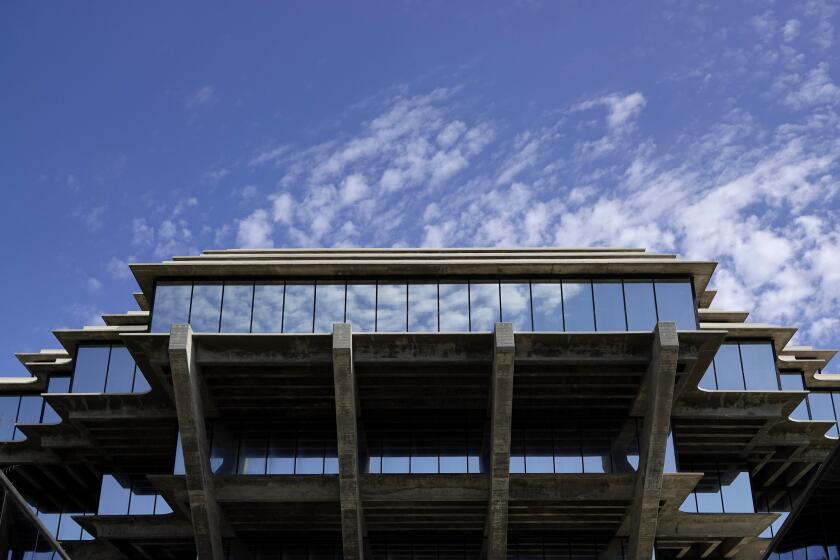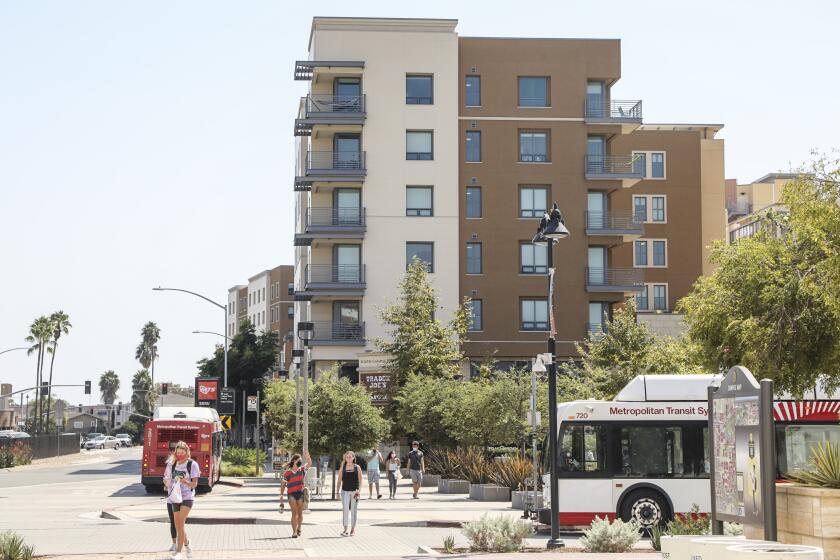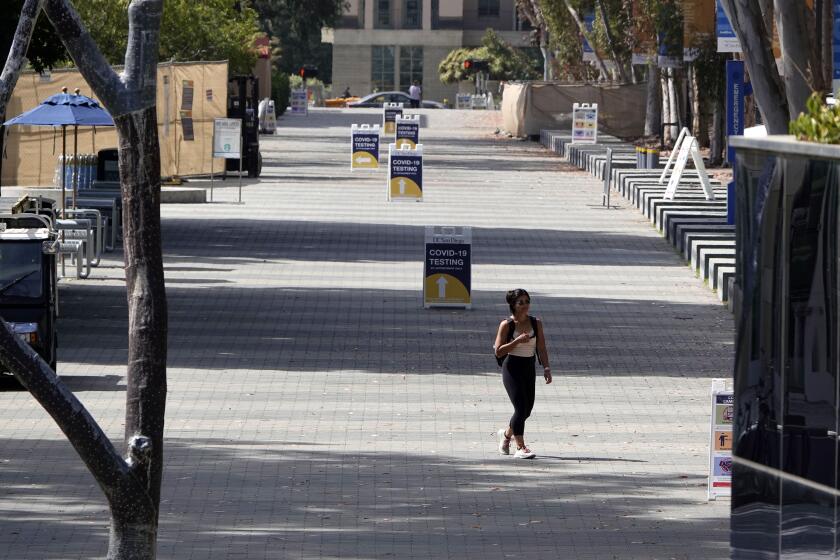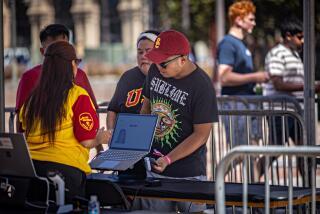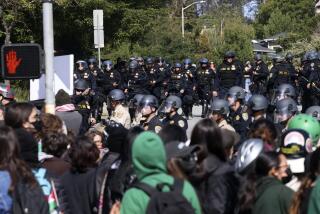600 UC San Diego students, faculty ask university to drop plans to reopen campus

- Share via
Nearly 600 UC San Diego students, faculty and staff have signed an open letter asking the school to drop plans to place thousands of undergraduates in dorms and resume some in-person classes due to the threat posed by the novel coronavirus.
The letter notes that many universities, including Notre Dame and the University of Alabama, experienced COVID-19 outbreaks when they opened dorms and that “to imagine that UCSD will be an exception to this rule is both arrogant and negligent.”
The plea comes during a holiday weekend in which 2,600 students were confined to their dorms at San Diego State, where nearly 300 students have tested positive for COVID-19.
Nearly 600 students and faculty of UC San Diego signed a letter asking the university to roll back its Return to Learn plan for the fall semester.
The UC San Diego letter was co-authored by Danny Heinz, a doctoral student who told the Union-Tribune, “I am concerned that there will be an outbreak that could spread beyond campus to the community and that it could sacrifice the education of children, shut down business and affect the public’s health.”
The letter — whose signatories include famed UC San Diego neuroscientists Nick Spitzer and Ralph Greenspan — targets Return to Learn, a plan that’s meant to restore a degree of normalcy to one of the country’s fastest-growing research schools.
Among other things, the plan calls for placing about 7,500 undergraduates in dorms over a 10-day period later this month. Each student would be tested for COVID-19 upon arrival, then retested roughly two weeks later.
The plan further requires students and employees who visit the campus or any other physical location to conduct daily self-screening for symptoms of COVID-19.
The letter cited a Union-Tribune story that said 252 UC San Diego students, staff and healthcare workers have tested positive for the virus even though in-person classes are not yet underway. The letter also cited a different Union-Tribune story the university‘s unwillingness to share details of its safety programs in recent weeks.
Universities across the country are having trouble convincing students to obey public health orders
University officials defended their plan on Monday, telling the Union-Tribune in a statement that Return to Learn “is a multi-faceted, proactive strategy to detect SARS CoV-2 (which causes COVID-19) in our campus community so that we can reduce transmission of the virus to the greatest extent possible.”
On Friday, UC San Diego officials said, “a system developed by campus experts enabled us to detect trace amounts of virus in wastewater. This program allows us to detect the virus before symptoms appear. We were able to alert those who may potentially have been affected that they should be tested as soon as possible out of an abundance of caution.
“Courses will be delivered predominantly online with about 12% offered in person or in a hybrid format,” the statement said. “Students have the choice to live on-campus, off-campus or remain at home, as well as enroll in all remote, hybrid or in-person courses.”
The open letter challenges the plan, saying, “When it comes to public health, we do not believe a top-down approach can effectively control the behavior of individuals within the community.
“Rather, the university’s refusal to acknowledge fears about Return to Learn, as well as the release of recent data on the university’s budget and finances, suggests that the university is being run as a business rather than as a community, and that financial incentives are being prioritized at the expense of community well-being,” the letter said.
Many of the nation’s top research universities have tried to prevent COVID-19 outbreaks only to fail. They include the University of Illinois, which last week announced that about 700 students have tested positive for the virus.
The 5 schools have 13,300 unfilled dorm beds
UC San Diego says that it is likely that some of the 7,500 incoming undergraduates will be infected with COVID-19.
“Maybe it will be 30, maybe it will be 20, maybe it will be 40,” said Dr. Angela Scioscia, interim executive director of Student Health and Wellbeing. “I don’t expect 100. That would be a bit of a surprise.
“We think a two-week surveillance plan has a very high likelihood of picking up an outbreak very early,” she said.
Scioscia also said that quickly isolating and, if necessary, treating infected students will greatly reduce the chances that the virus would spread widely.
Cathy Gere, a history professor who signed the open letter, doesn’t share that view.
“I appreciate the fact that the administration is having to make difficult choices under difficult timelines,” Gere said Monday. “But the idea that we can dictate student behavior and roll out technical solutions has been shown again and again to be demonstrably untrue.”
More to Read
Sign up for Essential California
The most important California stories and recommendations in your inbox every morning.
You may occasionally receive promotional content from the Los Angeles Times.
